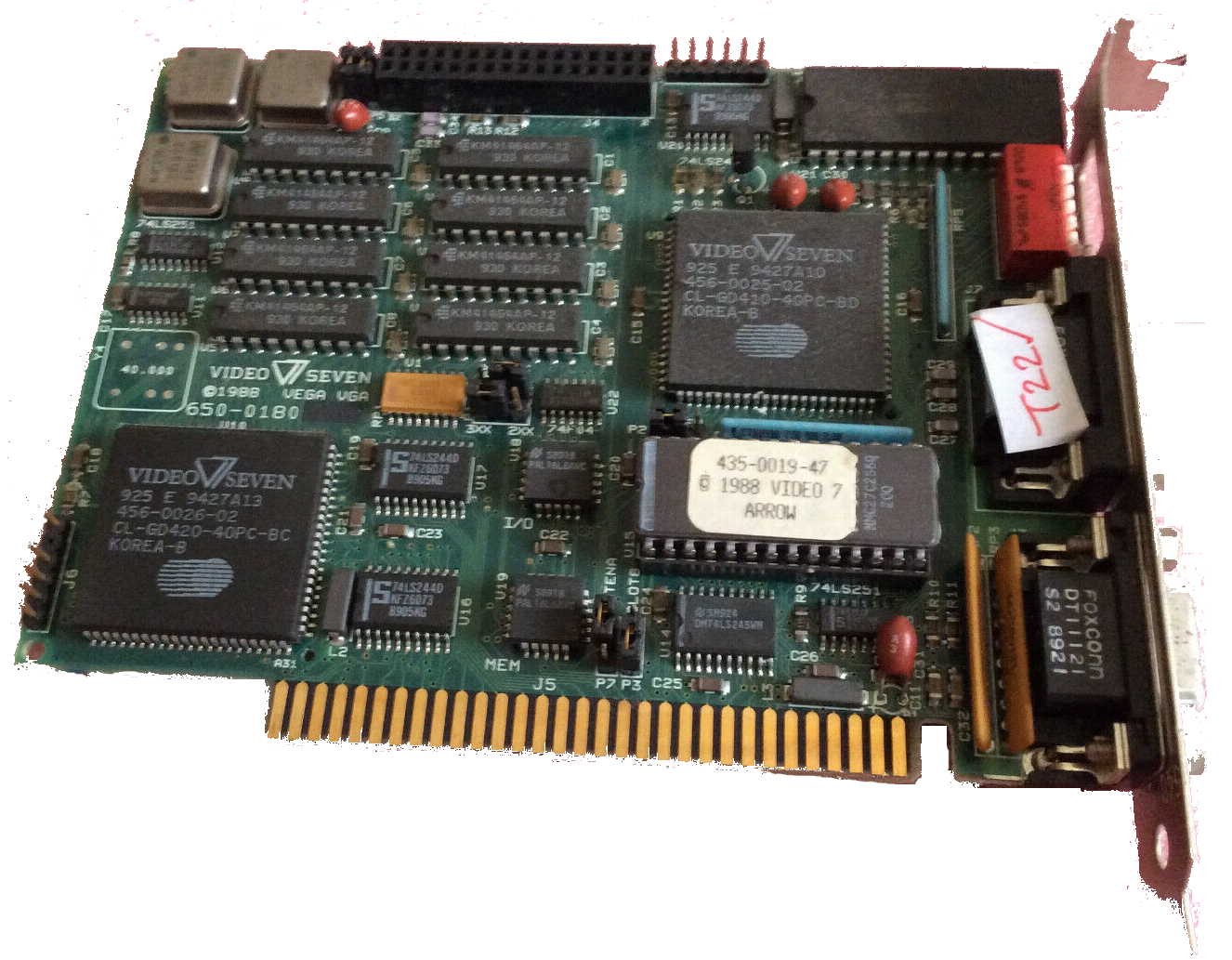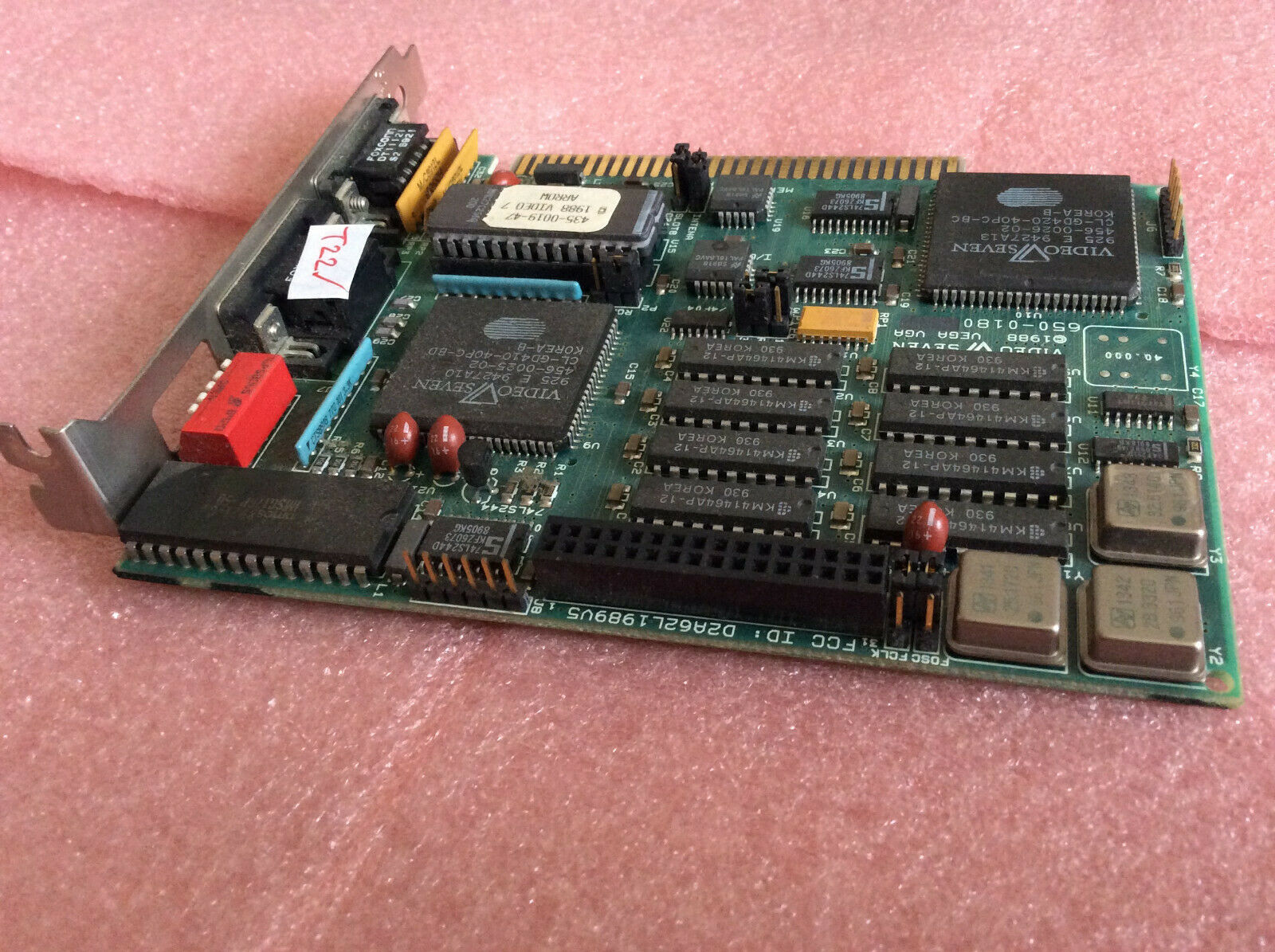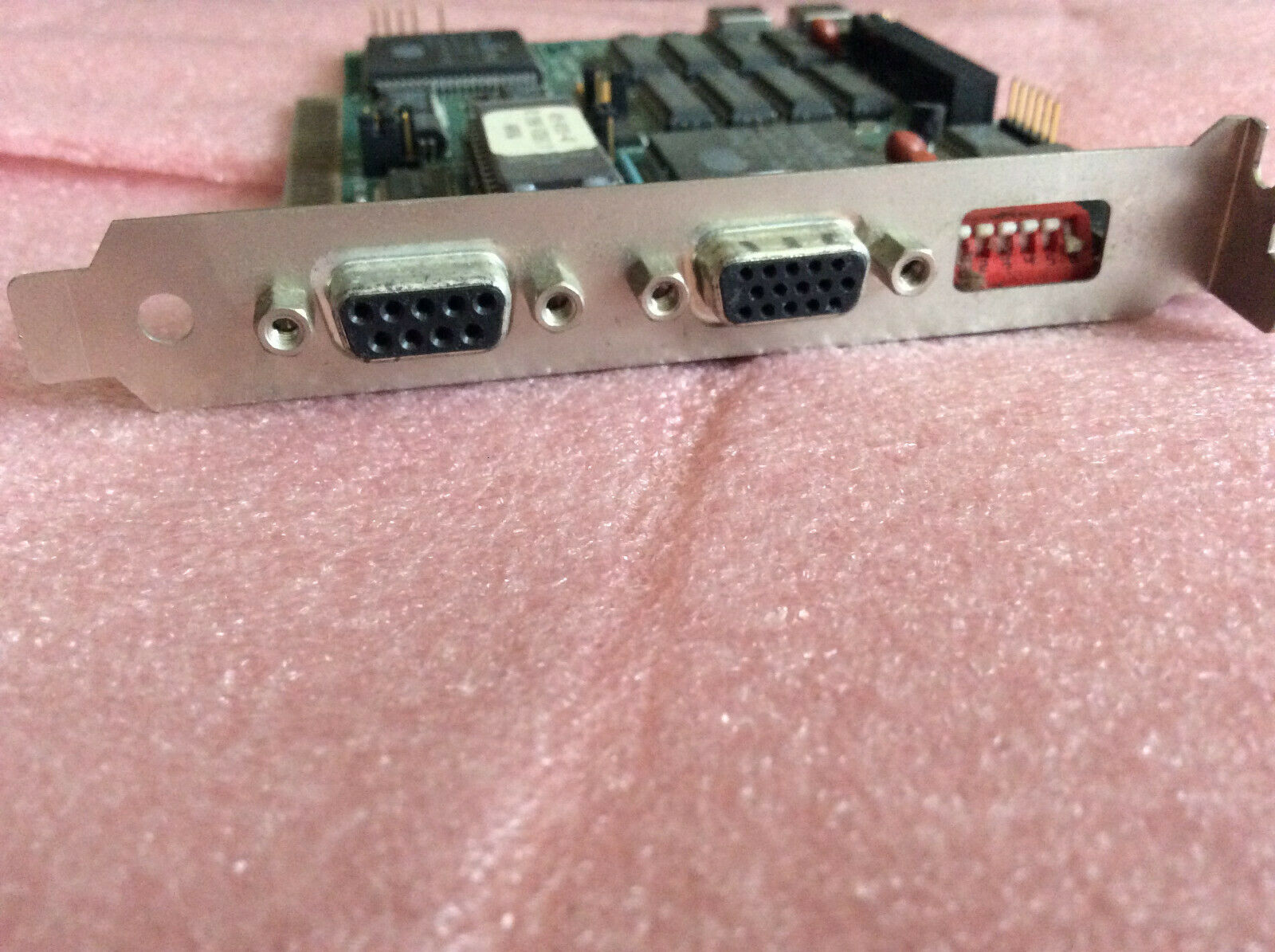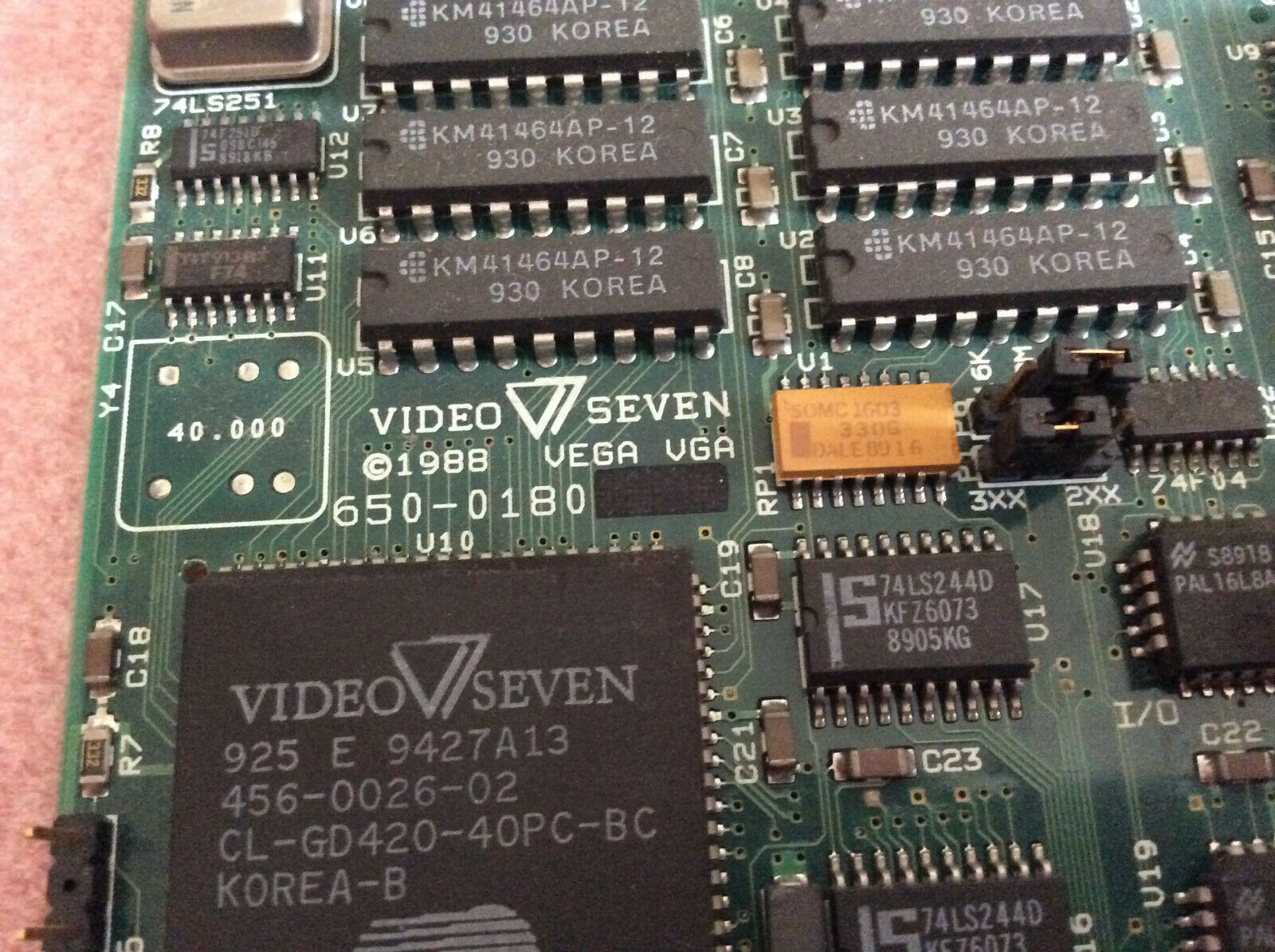Cirrus Logic CL-GD410 / CL-GD420
The CL-GD410 and CL-GD420 chipset arrived in 1987, providing better performance over what the standard IBM VGA card could manage. It also added support for an 800 x 600 mode and 752 x 410 (both in 16 colours), as well as special text modes like 80x60 and 132x43, making this a 'Super VGA' card chipset.
|
Released | 1987 |
| Bus | ISA 8-bit | |
| Chipset | Cirrus Logic CL-GD410 / 420 | |
| Standards | MDA, Hercules, CGA, EGA, VGA | |
| Memory | 256 KB DRAM (120ns) | |
| RAMDAC | (External) | |
| Part # | 456-0025-01 (CL-GD410), 45-0026-01 (CL-GD420) | |
| FCC IDs | ||
| Cards | VideoSeven VEGA VGA | |
| See Also | Cirrus Logic CL-GD510/520 |
One graphics mode used on IBM PS/2 systems around this time was a 640 x 480 2-colour MCGA mode, which this chipset did not support. The CL-GD410/420 provided onboard hardware register-level backward compatibility for MDA, CGA and EGA, though some unofficial testing performed since has shown that this chipset has less than 100% CGA compatibility.
Given this was a two-chip chipset, each had these functions:
- CL-GD410: graphics controller (contains the bus interface logic and is responsible for directing memory reads and writes to and from video memory) and attribute controller (works with the sequencer to generate the correct colour index)
- CL-GD420: sequencer (responsible for converting video memory to colour indexes - operates in both text and graphics modes) and CRT controller (sends the image data to the monitor)
Cards that used this chipset usually had it coupled with an Inmos RAMDAC such as the IMSG176S which ran at 35 MHz. The chipset's core clock ran at 40 MHz.
Unlike the IBM VGA adapter which had two crystals (25.175 MHz and 28.322 MHz), cards that used the CL-GD410/420 also had a 32 MHz crystal for the extended graphics and text modes they supported.
The CL-GD410/420 was superceded by the CL-GD510/520 chipset in 1989, which was called "Eagle II" (does that mean the 410/420 was "Eagle"?).
Revisions
The revision of the chip is the last character(s) in the part number, so in the image at the top, the 410 and 420 are both Rev.BB. Known revisions include B, BB, BD, C, and E.
Known video ROM BIOS chips have the following Cirrus Logic part numbers:
- 435-0016-10 (also labelled 'Video 7')
- 435-0016-33 (also labelled 'Video 7')
- 435-0016-47 (also labelled 'SEC' - Samsung possibly?)
- 435-0019-47 (also labelled 'Arrow')
BIOS versions include v1.12 (26th March 1988).
Competition
In 1987, the first VGA clone cards were arriving, including cards based on the Tseng Labs ET3000 chipset, as well as the ATI EGA Wonder (not quite VGA but supported 800 x 600 in 16 colours) and ATI EGA Wonder VIP. Another chipset of note at this time was the Chips & Technologies CT82C441. Getting top performance from your graphics card really wasn't a concern in 1987 - it was more about features such as a card's ability to auto-switch graphics modes, support for multisync monitors, high refresh rates, the amount of video memory to support higher resolutions, and the quality of the display output.
In the Media
Setting it Up
Downloads
Operation Manual Get in touch if you can provide this missing item! |
Original Utility Disk Get in touch if you can provide this missing item! |
|




